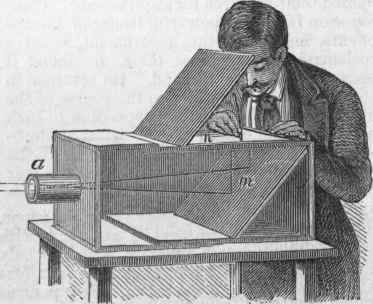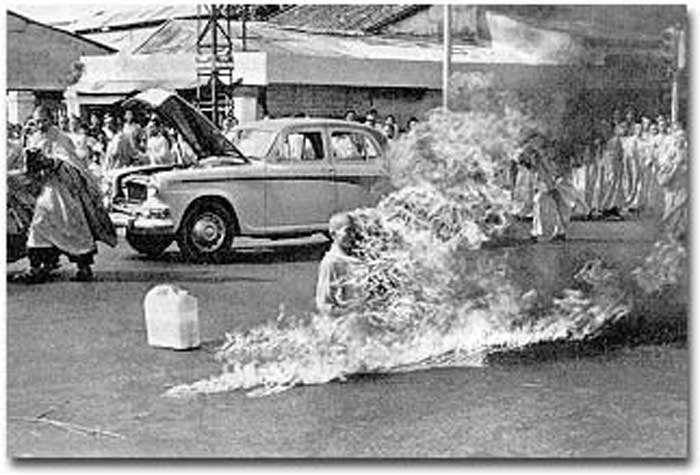

Photography is the science, art, application and practice of creating durable images by recording light or other electromagnetic radiation, either electronically by means of an image sensor, or chemically by means of a light-sensitive material such as photographic film.
Photography is the result of combining several technical discoveries. Long before the first photographs were made, ancient Han Chinese philosopher Mo Di from the Mohist School of Logic was the first to discover and develop the scientific principles of optics, camera obscura, and pinhole camera. Later Greek mathematicians Aristotle and Euclid also independently described a pinhole camera in the 5th and 4th centuries BCE.


lets look back over photographs that have had a profound impact on the way we live today.


We all know that Buddhism was banned and severely repressed in countries without religious freedom. You need not even bring up the atrocities committed in China until recently. However, one of the many “martyrs” who have raised Buddhist, was forever immortalized by the photographer’s lens working Malcolm Browne covering the Vietnam War.
On the morning of June 11, 1963, Malcolm went to cross the boulevard Phan Dinh Phung and Le Van Duyet street in the heart of the Vietnamese city of Hue. Here he found a very unique protest that would change her life.
That day, a Buddhist monk to death bonzo immolation protest as a rejection of oppression that the Vietnamese government of Ngo Dinh Diem had on the Buddhist religion in this country.


This picture caused a stir when it was published in French magazine Vu, and, it has been argued, even helped strengthen the Republican cause. Some regarded it as a symbol of anti-Fascism, others as a more universal anti-war statement. Either way, the political implications of photography were fast being realised.


Proof of man's ability to wreak destruction on a vast scale; the image of the mushroom cloud, captured here as 80,000 people were killed in one blow, is imprinted on the collective imagination.


This picture, which points out the injustice of social segregation, became a well-recognised symbol for the need for change. Looking at it now speaks volumes about how much has changed since then.


Nick Ut's photograph of five children running in terror from an accidental napalm attack was widely published around the world, and crystallised in people's mind's the grim injustices of the Vietnam war. The war was heavily reported on and historians believe that images, particularly this one, had a huge impact at home, resulting in violent anti-war protests, a world-wide campaign for peace, and even contributing to the end of the war.


The government sent tanks to brutally kill hundreds of workers, students and children in a crackdown on the protest at Tiananmen Square. A small, unknown, unexceptional figure stood bravely in protest in front of the tanks. As TIME magazine reported it, he "revived the world's image of courage". It is when history disguises itself as allegory that the camera writes it best.


This Pulitzer Prize-winning picture of a vulture waiting to feed on a dying toddler in Sudan summed up the cruelty of the famine in Sudan. It also, famously, highlighted the plight of the photographer; within three months of gaining recognition for this photograph, Kevin Carter committed suicide.


A series of "trophy" images famously revealed by the United States Army Criminal Investigation Command in 2004, exposed abuse and humiliation of Iraqi inmates by a group of US soldiers.
Hi! I am a robot. I just upvoted you! I found similar content that readers might be interested in:
http://www.telegraph.co.uk/culture/culturepicturegalleries/6152050/Ten-photographs-that-changed-the-world.html
Interest post, you have a new follower. i hope you follow me as i need the support.